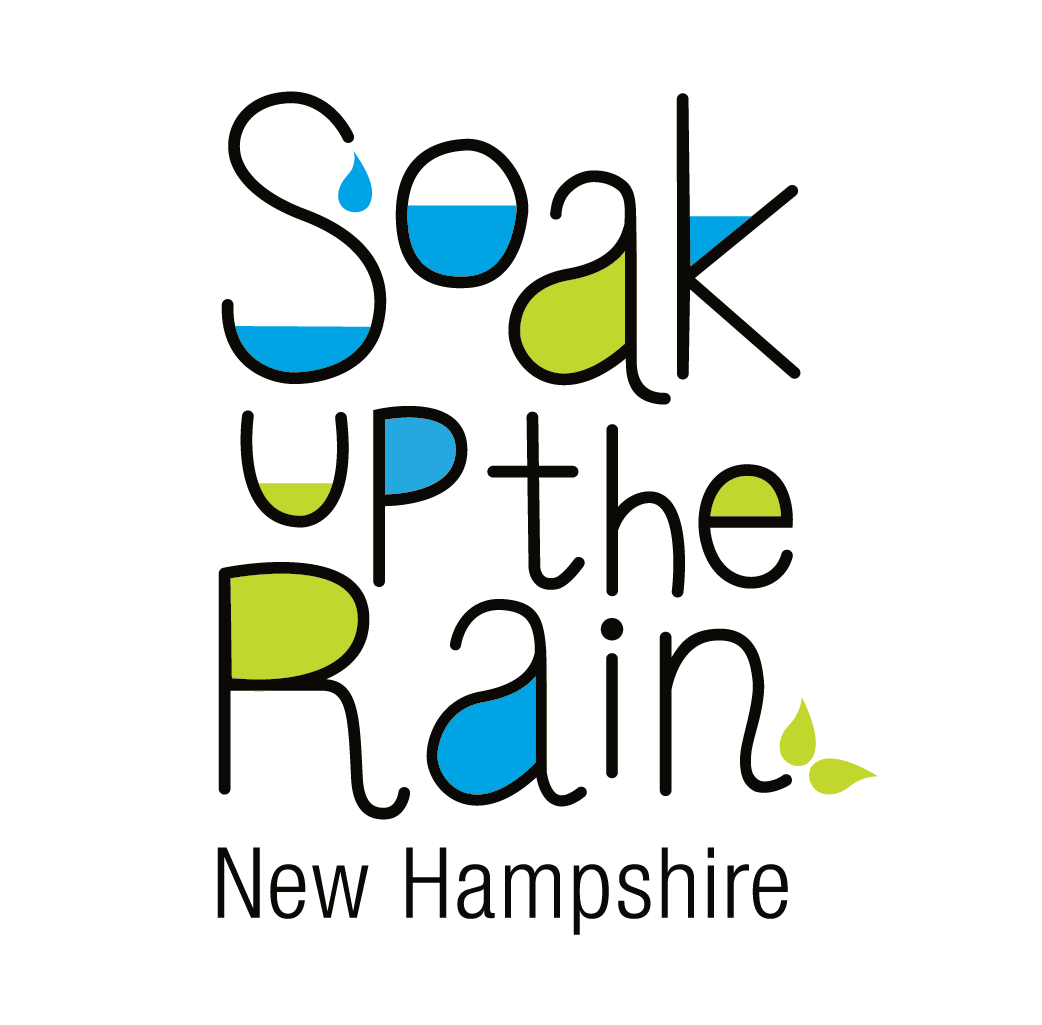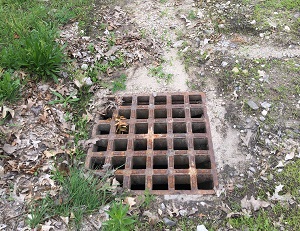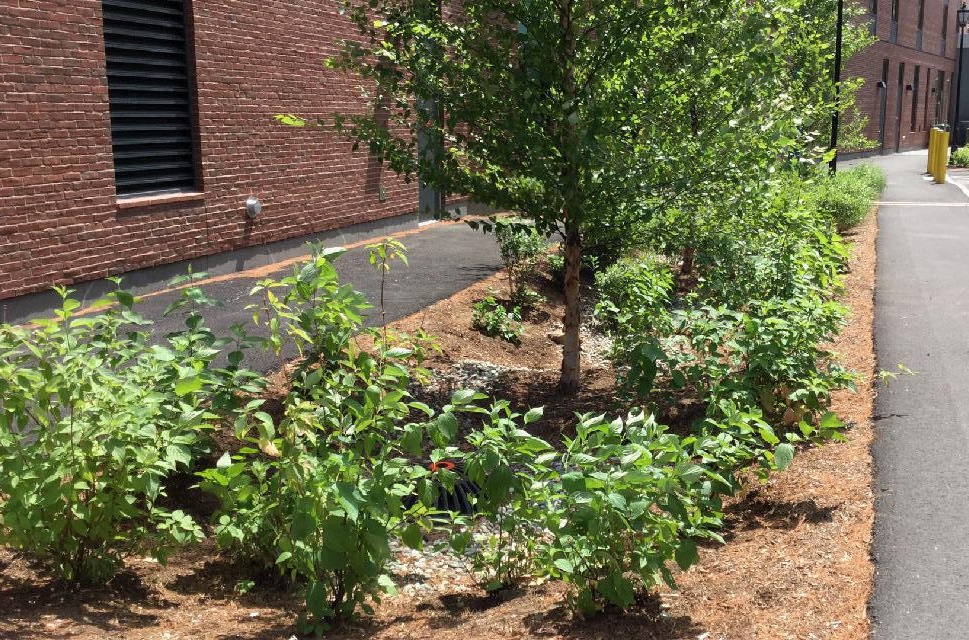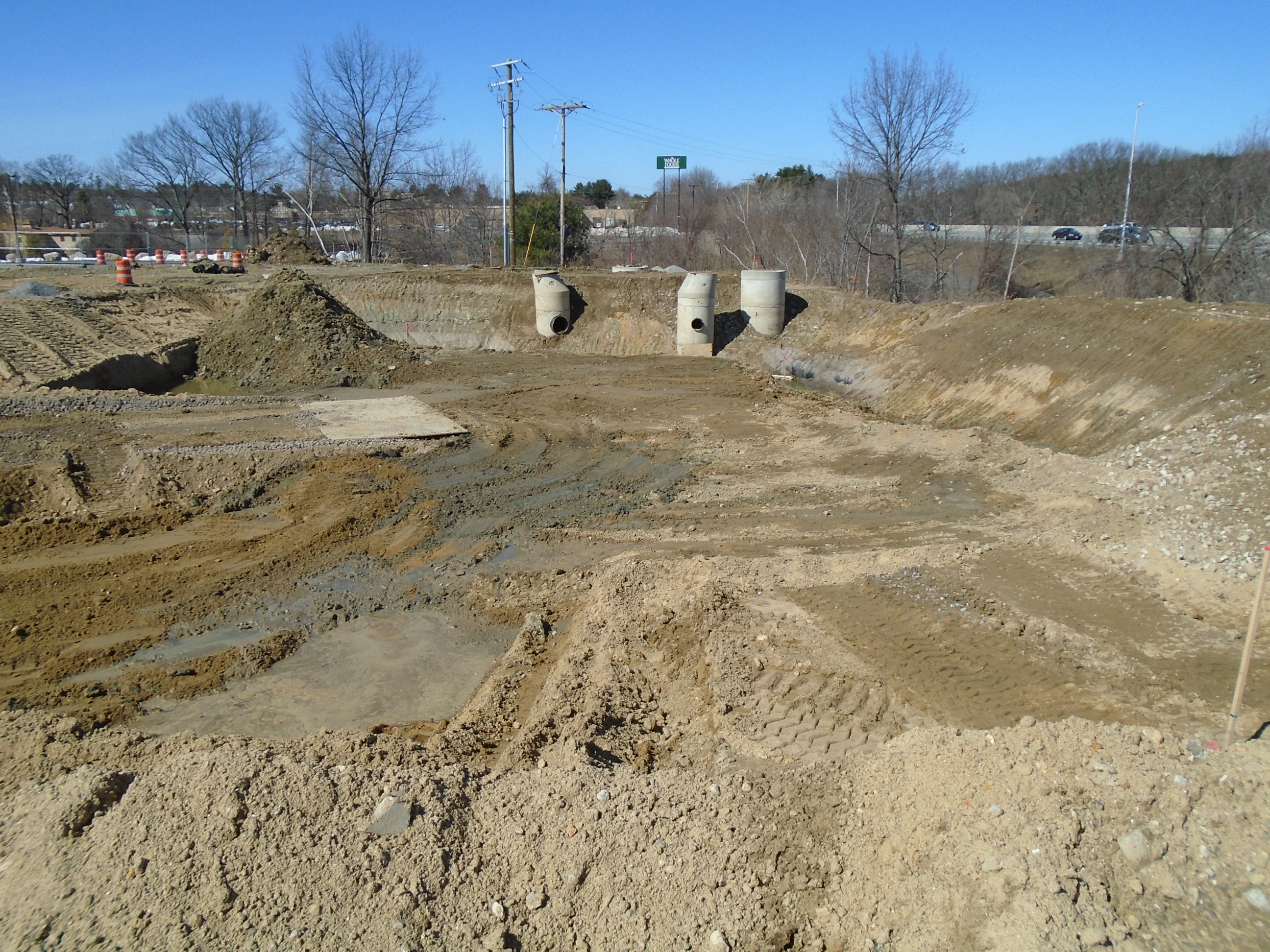Stormwater
Managing stormwater to protect the state’s water resources and balance a healthy environment with social and economic growth.
Stormwater is water from rain or melting snow that does not soak into the ground. All across New Hampshire, communities, businesses and property owners are experiencing the challenge of managing stormwater to protect the state’s water resources and to balance the need for a healthy environment with the need for social and economic growth.
Unlike pollution from industry or sewage treatment facilities (i.e. point source pollution, which is caused by a discrete number of sources that are easily identified), stormwater pollution is caused by the daily activities of people everywhere. Most of the water quality problems in lakes and rivers are the result, in some part, of stormwater runoff. Because of this, the responsibility of managing stormwater falls on everyone.
New Hampshire State Stormwater Needs Survey
NHDES is collecting information for the 2022 New Hampshire State Stormwater Needs Survey. Results of this survey are used to determine stormwater funding opportunities at both the federal and state levels.
Related Content
Home and Small Business Owners

Soak Up the Rain New Hampshire (SoakNH) offers a variety of ways to voluntarily manage stormwater runoff from residential and small business properties.
- Property owners can explore the Stormwater Solutions to learn how to infiltrate or redirect runoff, reduce erosion, and encourage groundwater recharge.
- Lake and watershed associations can partner with SoakNH to form their own local groups, providing outreach and education to their members about the benefits of soaking up the rain.
- Anyone can explore and be inspired by the photo galleries and stories showcasing New Hampshire residents soaking up the rain with rain gardens, infiltration steps, dry wells and other practices.
Property owners can estimate their “stormwater footprint” with the New Hampshire Residential Loading Model, which is based on the Center for Watershed Protection’s Runoff Reduction Method. Check out the Winnipesaukee Gateway’s adaption of the model in this web-based interactive spreadsheet.
See the "New Hampshire Homeowner’s Guide to Stormwater Management" for more guidance.
Municipalities, Construction Sites and Industries
Stormwater is regulated by the EPA under the Clean Water Act. The requirements are called Phase II Stormwater Regulations since they are the second round of storm water rules implemented by EPA. Phase I, passed in 1992, dealt with larger municipalities (none in New Hampshire), privately-owned industries, and construction sites of 5 acres or larger. The National Pollutant Discharge Elimination System (NPDES) program is administered by EPA in New Hampshire. For more information, read the Federal Stormwater Permits fact sheet. Also see: Clarification of NH Specific Conditions (Section 9.1.1) in the EPA 2017 Construction General Permit and List of Outstanding Resource Waters and Impaired (4A and 5) Waters for CGP NOIs.
The following are three permits under Phase II Federal Stormwater Regulations:
- Construction General Permit (CGP).
- Multi-Sector General Permit (MSGP).
- Small Municipal Separate Storm Sewer System (MS4) Permit.
The following are State guidance documents for New Hampshire Small Municipal Separate Storm Sewer System (MS4) Permit:
- Guidance to New Hampshire MS4 permittees on aspects of the NH MS4 permit that reference the NH Department of Environmental Services
New Hampshire Stormwater Manual
The New Hampshire Stormwater Manual was developed in 2008 as a planning and design tool for the communities, developers, designers and members of regulatory boards, commissions, and agencies involved in stormwater programs in New Hampshire.
 An overview of New Hampshire's stormwater program federal requirements
An overview of New Hampshire's stormwater program federal requirements
Volume 1 of the New Hampshire Stormwater Manual presents an overview of New Hampshire's stormwater program together with related federal program requirements, describes New Hampshire's antidegradation provision (Env-Wq 1708) with respect to controlling water quality impacts due to stormwater discharges, and provides an introduction to the non-structural and structural measures for managing stormwater.

Best Management Practices (BMPs)
Volume 2 of the New Hampshire Stormwater Manual presents a detailed description of the structural Best Management Practices (BMPs) applicable for use in New Hampshire for the prevention, control and treatment of stormwater. The entire second volume and individual chapters can be accessed through the following link:

Erosion and Sediment Controls
Volume 3 of the New Hampshire Stormwater Manual presents a selection of practices applicable during the construction of projects to prevent adverse impacts to water resources as a result of land-disturbance activities. The entire third volume and individual chapters can be accessed through the following link:
NH-MS4 Blog
The New Hampshire Stormwater Regional Coalitions Blog, NH-MS4, provides meeting information, resources and updates for NH-MS4 regulated communities.
Stormwater Utilities
As the challenges and costs of managing stormwater continue to grow, many communities are exploring stormwater utilities as a sustainable option.
Alteration of Terrain (AoT) Permitting
To help protect surface water and groundwater quality, the Alteration of Terrain Program requires a permit for land disturbances, depending on the size of the project.
Did you know?
Did you know?
Development within the protected shoreland may require stormwater management. Read the summary of the minimum standards for more information.




